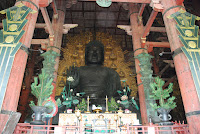The use of land is a contentious issue. The debate often involves what should take precedence in determining the use of land with more than 12 per cent of the surface land under protected areas ( According to the World Conservation Monitoring Center). While the trade-off between the claims of indigenous people and the claims for non-human species are unclear, the protection of the natural environment has made displacement and compensation-based resettlement a taken-for-granted strategy in developing countries. Studies show that the practice of conservation through displacement adversely affects people’s welfare, and particularly that of economically marginalized people.
Nepal has almost 23% of its total surface area for conservation. The large-scale displacements continue to represent the major conservation strategy whereas the indigenous communities face social exclusion which has been historically rooted in the land settlement policies. The backdrop of this socio-economic upheaval involved a displaced indigenous group, the Rana Tharus in the western-most districts of Kanchanpur in Nepal. Rana community experienced a large-scale displacement due to the expansion of the Shuklaphanta Wildlife Reserve in 2001. Consequently, the Nepalese government carried out a land-based resettlement scheme on the principle that all displaced families should be given cultivable land, which they previously lost due to the extension of the wildlife reserve.
 |
| Shukalphanta Wildlife Reserve |
We conducted an empirical study based on an 18-month long anthropological survey of the displaced Rana Tharus community administered between 2004 and 2006. Our research findings indicate that the conservation-led displacement made the Rana Tharus community vulnerable to further impoverishment. First, the history of social exclusion rooted in the land reform and land settlement policies deprived Ranas of proper land rights. Second, the inadequate land-based compensation policy both in terms of the size and the quality of land has compounded only social injustice. We further assessed the welfare impact of this land compensation policy.
On one hand, displaced Ranas suffered from landlessness, inadequate agricultural produce and food insecurity. This led only to further impoverishment. On the other, displacement led to serious household partitions in the wake of impoverishment. This negatively affected the patrilineal kinship relationships which have traditionally been a major source of informal security for Rana households, both economically and socially. Also, the poor harvest in the resettled communities and growing conflicts over the control of limited land deteriorated the traditional patron-client system of permanent agricultural workers and lowered the kinship ties. Overall, the erosion of informal safety nets resulted into a vicious cycle of poverty for the poor Rana Tharus community and made them vulnerable to destitution within a period of three to five years.
This is taken from my ongoing research with my colleague Christie Lam (Assistant Professor of Anthropology, Osaka University).






















